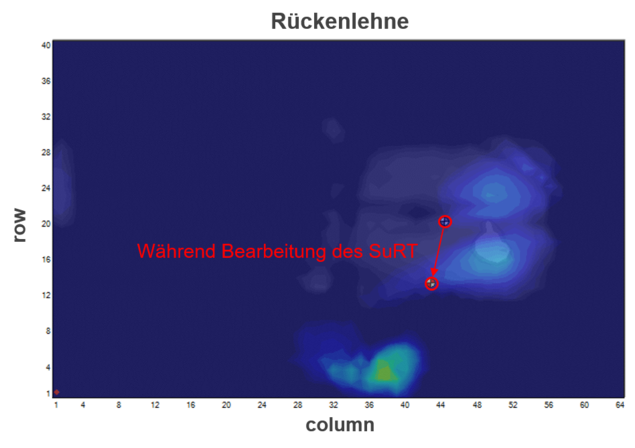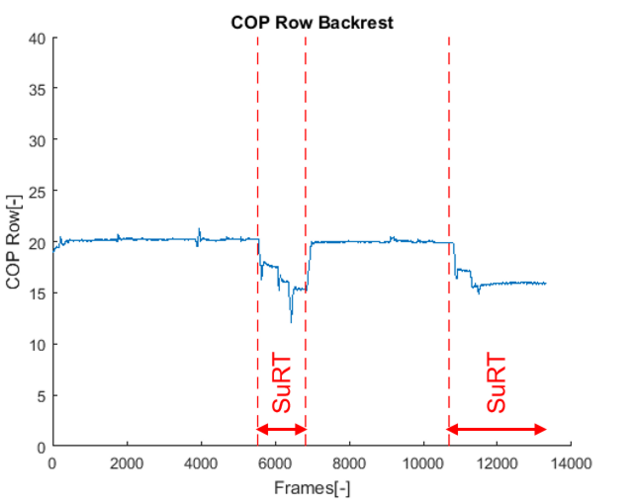Seat Pressure Measurement
In our society, sitting is an essential part of work and leisure activities. The seat/chair is the main contact surface with the environment. The resulting contact forces during the human-seat interaction can be used to obtain information about the behavior of the seated person or to evaluate the seat. Seat pressure measurement mats are indispensable as a measuring instrument.
The existing mobile seat pressure measurement mats of the Chair of Ergonomics work according to the physical principle of capacitance change, whereby the pressure at the measuring points is converted into an electrical signal and can be transmitted to a computer. With the aid of the corresponding software, seat pressure profiles can be recorded, visualized and evaluated for defined periods of time. The seat pressure measurement mats used have 40 x 40 (seat surface) and 64 x 40 sensors (backrest surface).


Application
In addition to the "right" sitting position, the correct seat pressure distribution has the biggest influence on seat (dis)comfort. The scientifically determined ideal pressure distribution (Mergl, 2005) is the result of recommended limit values for maximum pressure, gradient and percentage load distribution in the individual body part regions. The seat pressure measurement mats can therefore be used for the evaluation of different seats (car, train, airplane etc.) with regard to seat comfort.
Metrics like the center of pressure (COP) allow insight into the arousal or activity of drivers. The seat pressure mats have been used in studies at the institute of ergonomics to show different levels of activity due to a change in driver state in the context of (highly) automated driving.

